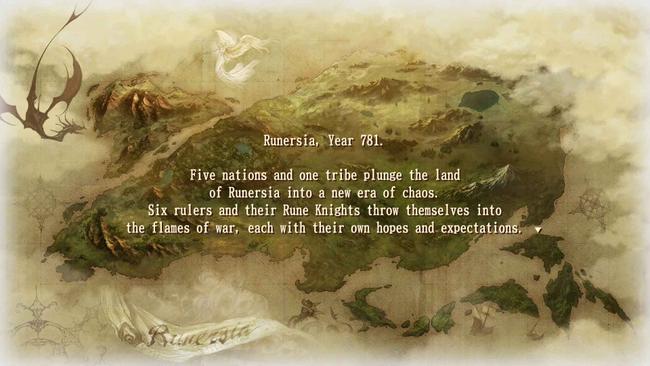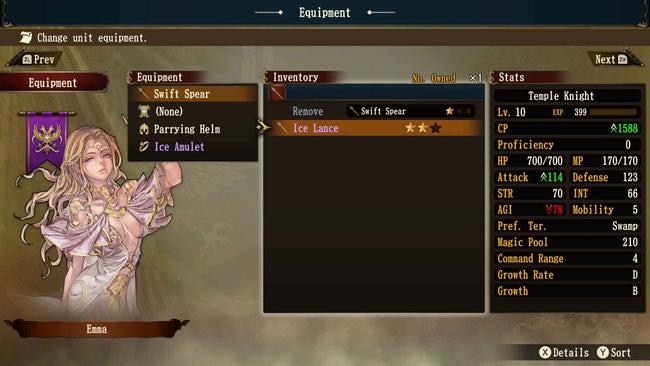
Brigandine: The Legend of Runersia Review
If you’re into obscure tactical RPGs, Brigandine is back again with a brand new sequel, Brigandine: The Legend of Runersia. If you’re familiar with the original PlayStation game, you’ll be sure to recognize many gameplay elements that carried on to this surprising follow-up.
The story of Brigandine: The Legend of Runersia begins with Rune Knights harnessing the power of mana and using their powers to conquer the world. Eventually, they pass on their powers enclosed in relics called Brigandines. As the story starts, a conspiracy leads to civil unrest across the continent. Here the player takes control of one of the six playable nations and will need to conquer the entire continent. Each nation has its own strengths, weaknesses, and story.

For players that are expecting a game with a heavy emphasis on narrative, they will probably be disappointed as Brigandine won't be offering much there. The story simply provides a base motive behind each nation's reason for conquest. After the opening premise, you'll be thrown into the game's main campaign. You will get tiny story segments or lore explanation over the course of the game after conquering a piece of hostile territory. However, these story bits are kept fairly broad with most of the finer details left vague, so you just have to fill in the blanks with your imagination or interpretation.
If there was a succinct way to describe Brigandine as a whole: it is very similar to the popular board game "Risk". The overall goal is similar, which is to occupy all enemy territory in the map, and accomplishing this goal will end the game. Add into this a considerable amount of replayability, as there are six different playable scenarios stemming from six different playable factions. The game also offers a difficulty option that will give the player a certain time limit to conquer all enemy nations, or no time limit at all if you're playing in easy mode.
Brigandine's gameplay is organized into two sections. First, you have the Organization Phase, where you decide on each commander's next course of action outside of combat. Here you either get to complete a quest, train to get stronger ranks in their class, or move them to a different base. When you occupy an additional base, you will gain additional mana resources that will let you summon monsters or maintain the current monsters in your army. The game will also offer a variety of options by letting you summon different monsters depending on which bases you're currently occupying.

Then there is the attack phase, which allows you to attack the closest base nearby. When engaging in battle, Brigandine shifts into a tactical RPG where characters are placed in a hex grid formation. When the players engage enemies in combat, your assigned commander will bring along their monsters and they will also gain buffs by staying near their hex; this is very similar to the commander system found in the Langrisser series. The objective in battle is to drive all the enemy commanders out in 12 turns or to occupy the enemy's castle by the end of the last turn. The game also offers a ton of customization during battles, as every unit can change class and learn new abilities as they level. It is also extremely punishing for players to lose their monsters, as their efforts in raising these monsters will go down the drain and revival items are extremely scarce.
One of the bigger issues with battles is that they have a tendency to take a while to play through, and it can be exhausting when triggering too many battles at once. The AI is also very predictable and will only attack nations that don't have a large army, and this behavior can be exploited if you want them to attack certain locations.
Although the game seems overwhelming at first, the game is quite simple to play and provides great tutorials to get the player accustomed to the in-game mechanics. There are also many diplomatic elements to it, such as having unofficial truces with your enemies. There are other ways to make things easier for yourself as well.
For example: if you're using the Norzaleo Kingdom, which is beginner-friendly, they have a location that makes things quite manageable for the player, even though they don't have the largest resources or the strongest army. With only two opposing nations nearby, they don't have to worry about being invaded by an enemy nation out of nowhere. Then there is the Shinobi Tribe, which has the lowest amount of resources and perhaps the weakest army, but they have the advantage of having only one hostile nation nearby and are in a forest, which makes it easier to defend against any oncoming invasion.

If there are any major gripes with the game, it mostly lies in the game's dated presentation. Despite a great art style itself, other visuals are technically ugly, with 3D models that feel like they belong from several console generations back. If players love class building and expect a visual change, you won't be getting much in that part either, as most of the upgraded units will simply get color palette changes.
Although the graphics might be a bit jarring to look at in battle, the character art is great with a mix of elegant anime art. While the visual production might not be winning any favors, the sound production is overall stellar. The soundtrack is robust, and each nation has its own distinct themes. The game is also fully voiced as well, though only in Japanese.
In summary, playing Brigandine is like the board game "Risk", its brilliantly complicated at first but also a fascinating game at the same time. If you want to try something different from the standard tactical RPG, Brigandine: The Legend of Runersia offers something unique that any fans of the genre should give a try.